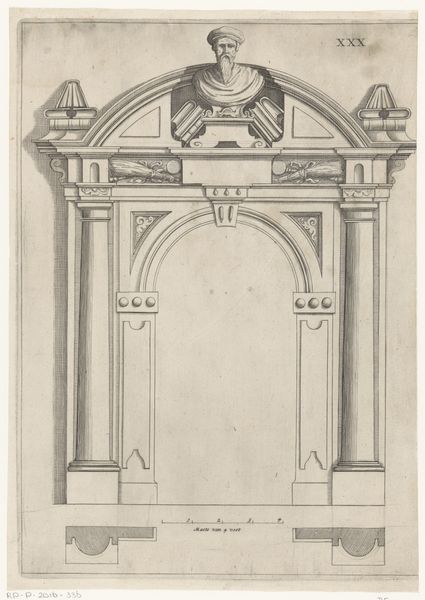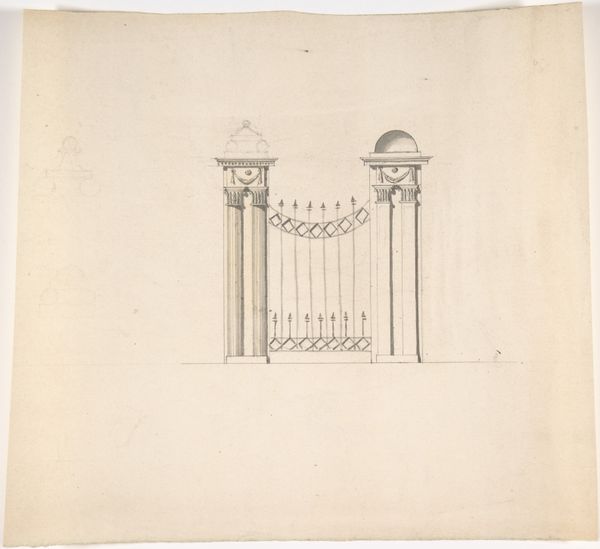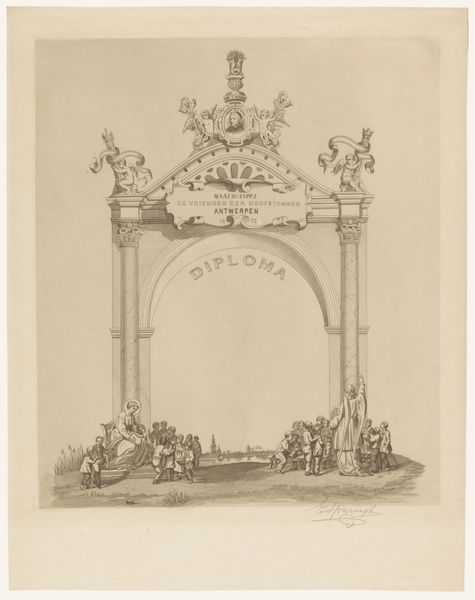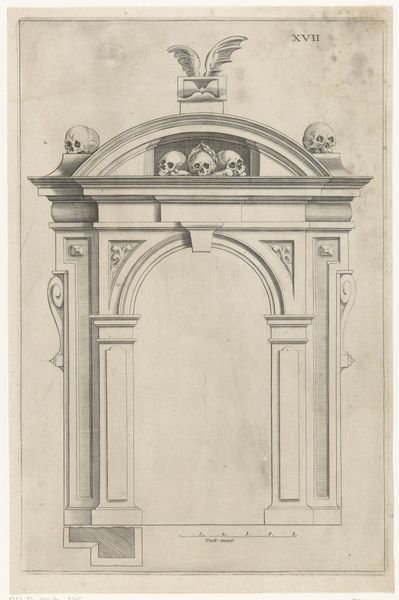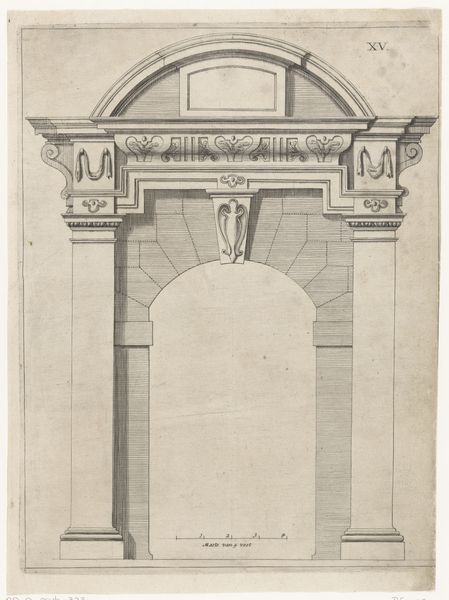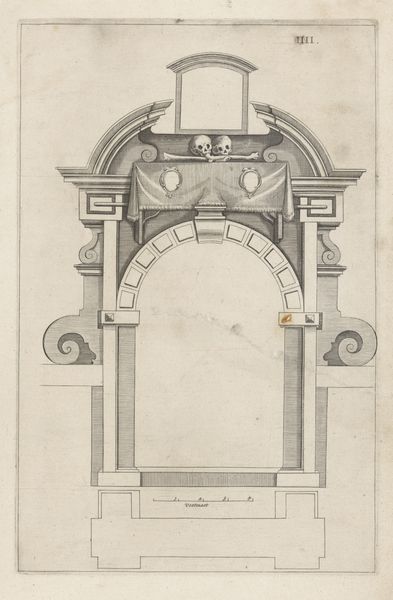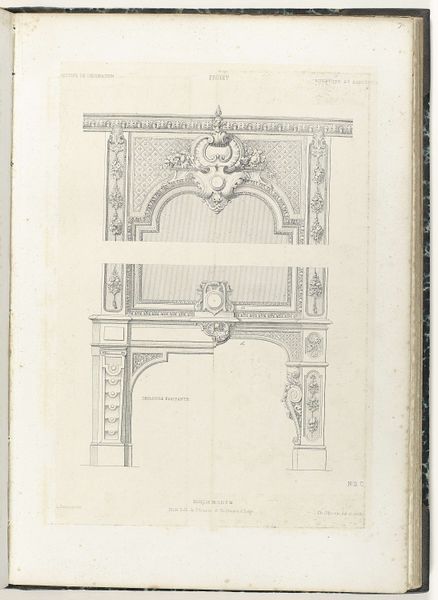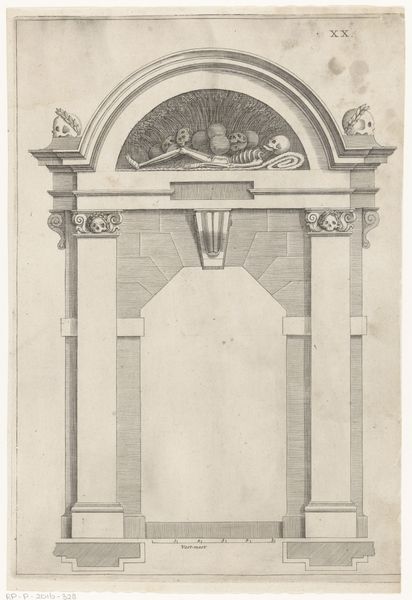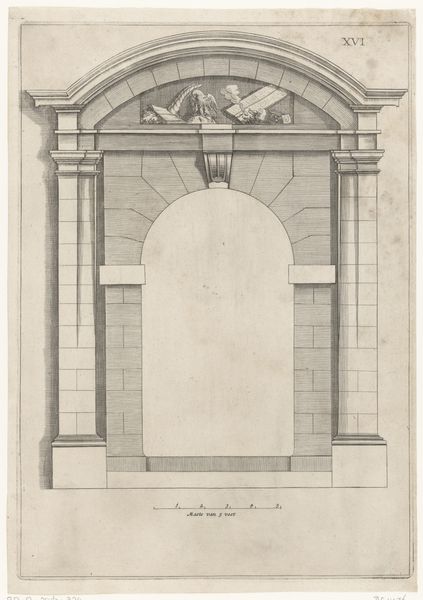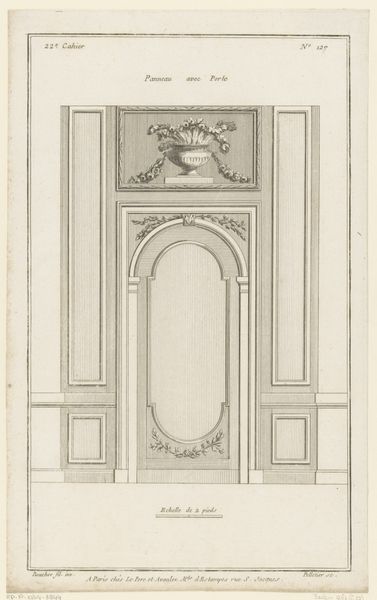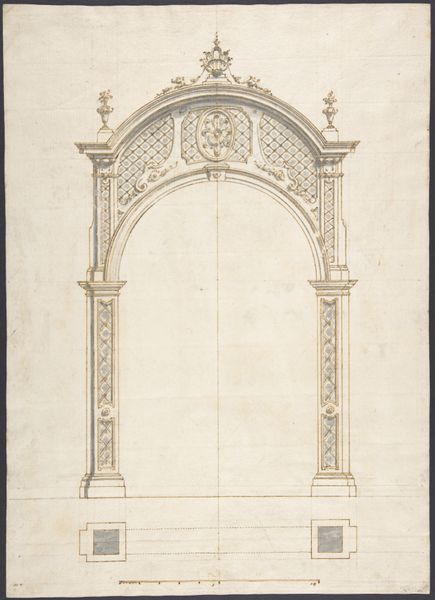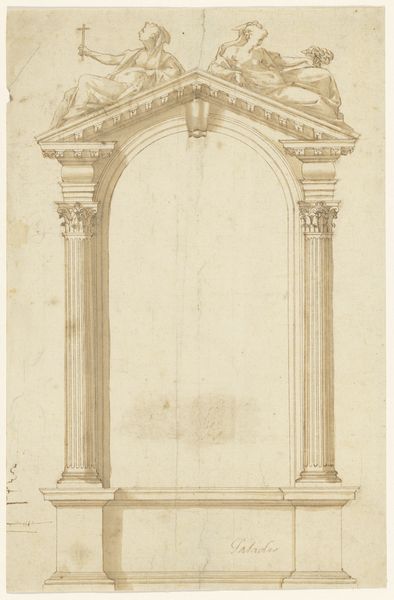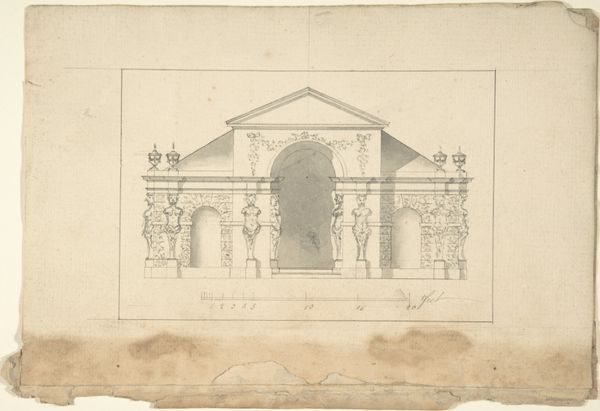
drawing, print, etching, paper, ink, architecture
#
drawing
#
neoclacissism
# print
#
etching
#
classical-realism
#
paper
#
ink
#
geometric
#
architecture
Dimensions: height 416 mm, width 325 mm
Copyright: Rijks Museum: Open Domain
This drawing of the Erepoort te Vlissingen was made in 1766 by an anonymous artist in the Netherlands. This ceremonial gate is likely a temporary structure built for a specific civic event. The drawing is interesting because of what it can tell us about Dutch civic rituals of this period. The gate itself is decorated with inscriptions, vases, and coats of arms; these were visual codes that would have spoken to the values of the community, or perhaps commemorated a specific event. Civic rituals like this were staged to reinforce community bonds and assert local pride and authority. They often served a political purpose. In the Dutch Republic, these events were often orchestrated by the local urban elite, who used them to display their power and legitimacy. To understand this drawing better, a social historian would want to research the history of Vlissingen, the meaning of its coat of arms, and the symbolism of triumphal arches and civic rituals in the 18th-century Dutch Republic. In this way, the meaning of this artwork emerges from its social and institutional context.
Comments
No comments
Be the first to comment and join the conversation on the ultimate creative platform.
